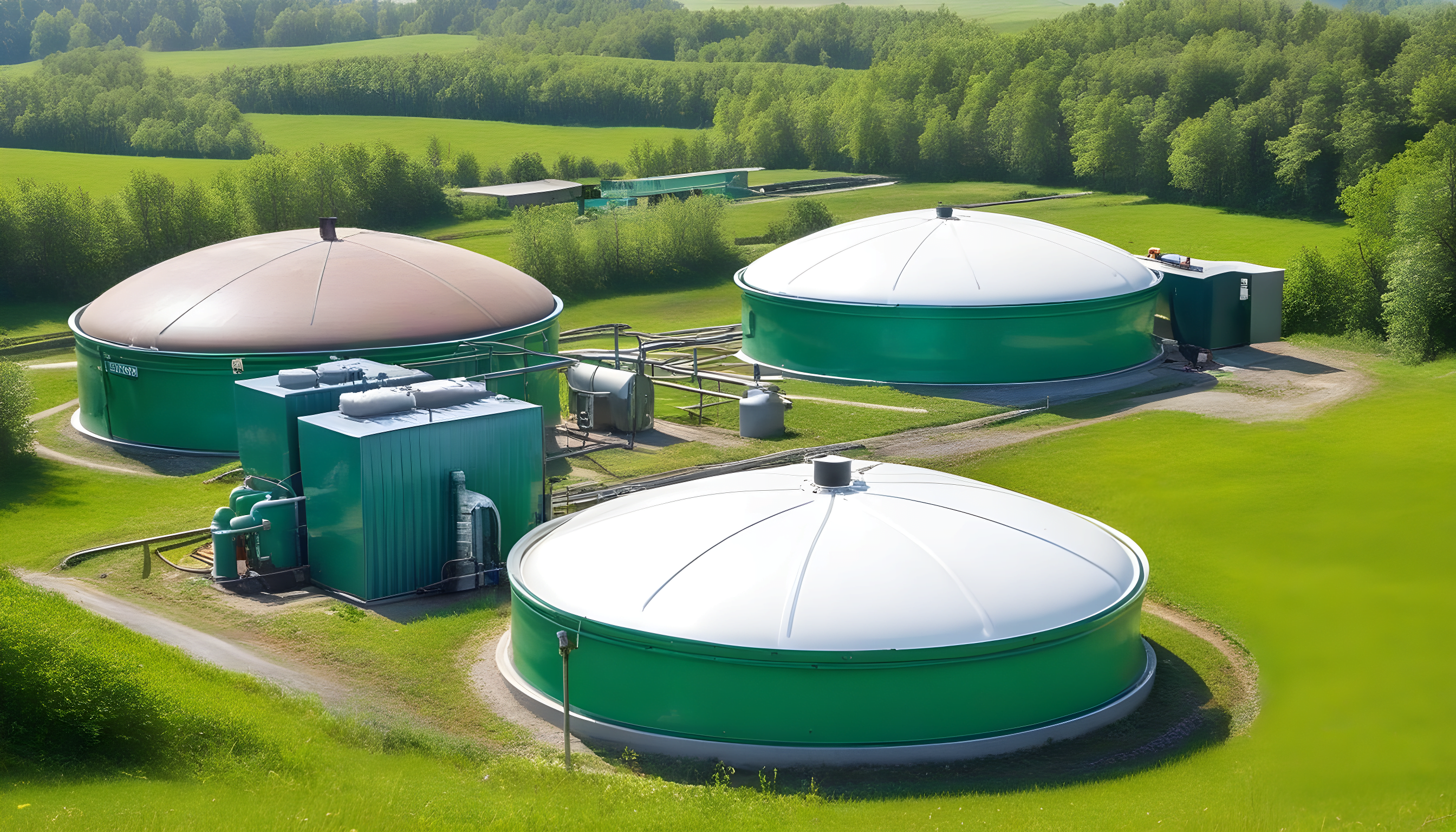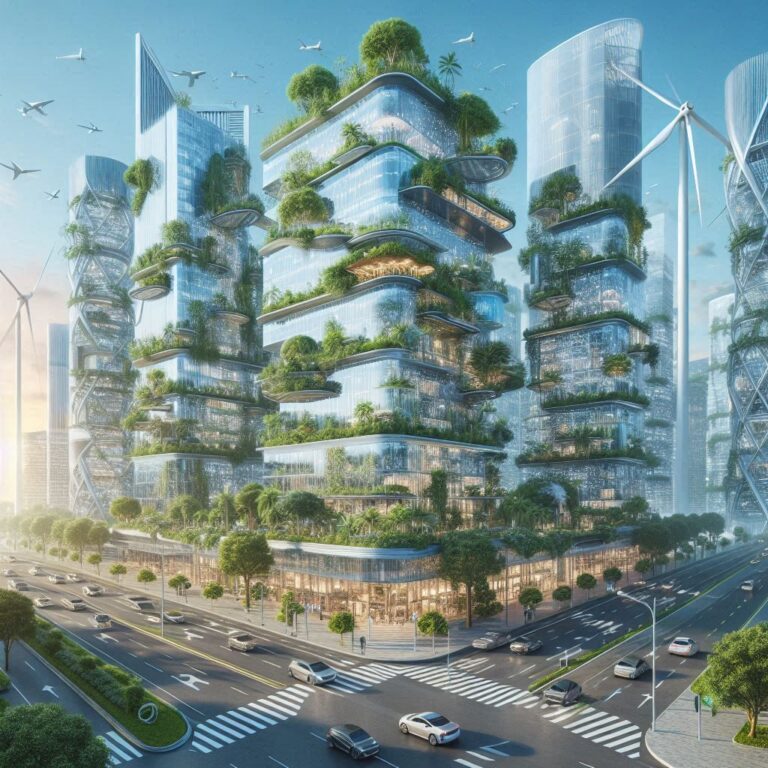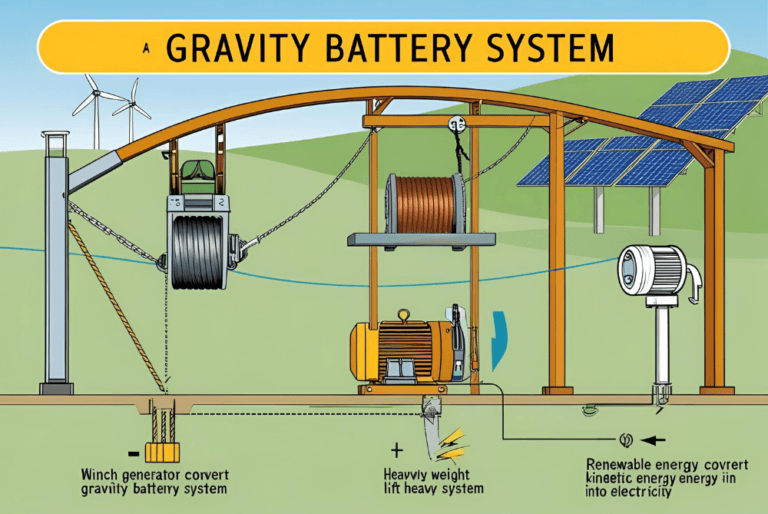Biogas Plant: Nature’s Ingenious Energy Solution
Biogas, an amalgamation of gases predominantly comprising methane and carbon dioxide, represents a crucial component of sustainable green energy solutions harnessed by mankind across diverse civilizations and historical epochs. From its origins in ancient civilizations such as China and India to its present-day prominence as a renewable energy source, biogas has evolved as a testament to human innovation and environmental consciousness. This comprehensive exploration delves into the chemical composition, historical lineage, and multifaceted applications and biogas benefits, offering insights into its historical trajectory and contemporary significance within the realm of renewable energy.

Historical Evolution of Biogas Plant
Ancient Civilizations and Early Observations
Mesopotamian civilization
The origin of the biogas plant predates the Assyrians, dating back to even earlier civilizations. However, the Assyrians, an ancient Mesopotamian civilization that thrived around 2500 to 600 BCE in what is now modern-day Iraq, did contribute to early advancements in the use of organic matter for energy purposes.

While there might not be direct historical records specifically detailing the Assyrians’ utilization of biogas, ancient civilizations like theirs commonly used various organic materials for fuel. They likely employed methods involving the decomposition of organic matter in anaerobic conditions (in the absence of oxygen) to produce gases for heating or lighting. These practices formed the rudimentary basis for what we recognize today as biogas production.
China (3rd Century BC):
The historical roots of biogas span back to ancient China, where its use dates back approximately 2,000 years. Chinese farmers pioneered anaerobic digestion to harness biogas from organic sources like animal manure and crop residues. Ancient Chinese texts, including the revered herbal classic Shennong Bencao Jing, allude to the use of “well gas” for lighting and heating purposes.
Scientific Explorations:
17th Century:
Jan Baptista van Helmont captures flammable gas from decomposing manure, marking early scientific interest in gas production from organic matter. In his scientific pursuits, van Helmont conducted an experiment involving gas generation from the decomposition of organic substances, particularly focusing on the fermentation of crushed apples. He observed that the gas produced during this process could be ignited and burned, leading him to coin the term “gas sylvestre” or “gas pingue” to describe this flammable gas.
1770s:
Alessandro Volta conducted experiments involving the collection and analysis of gases, notably those emitted from marshy areas. In his observations, he identified a combustible gas that was distinct from other gases he studied. He recognized this gas as a significant component of what was later termed “marsh gas.”
The gas Volta identified and recognized as a key component of “marsh gas” was indeed methane. While his work contributed to identifying methane as a constituent of natural gas emissions, it’s essential to note that the understanding of methane’s specific composition and its role in biogas as we know it today was further developed through subsequent scientific investigations and studies over time.
Sanitation Solutions:
Late 19th & Early 20th Centuries:
During the 19th and 20th centuries, biogas emerged as a transformative solution to pressing sanitation challenges faced by cities in Europe, North America, and beyond. The deployment of biogas digesters played a pivotal role in revolutionizing waste management practices.
As urban centers grappled with mounting concerns over sanitation and hygiene, biogas digesters were introduced as innovative facilities for treating sewage and municipal waste. These digesters served a dual purpose: effectively processing organic waste materials while concurrently addressing sanitation issues prevalent in densely populated areas.
world’s first dedicated biogas Methane digester 1859:
Bombay (now Mumbai), India, establishes the world’s first dedicated biogas digester using sewage sludge for streetlight gas, demonstrating practical biogas application at scale.
Rural Empowerment:
20th Century:
Small-scale digesters became cornerstones of change, providing rural households with a locally accessible and sustainable source of cooking fuel. This shift from traditional biomass sources, such as firewood, to biogas markedly improved indoor air quality and reduced health risks associated with smoke inhalation, benefiting the well-being of families.
Small-scale digesters became cornerstones of change, providing rural households with a locally accessible and sustainable source of cooking fuel. This shift from traditional biomass sources, such as firewood, to biogas markedly improved indoor air quality and reduced health risks associated with smoke inhalation, benefiting the well-being of families.
India:
In India, the advent of “Gobar Gas Plants” fueled by cow dung revolutionized rural energy dynamics. These plants, locally known as “Gobar gas” or “biogas plants,” gained widespread acceptance and utilization in rural households across the country.
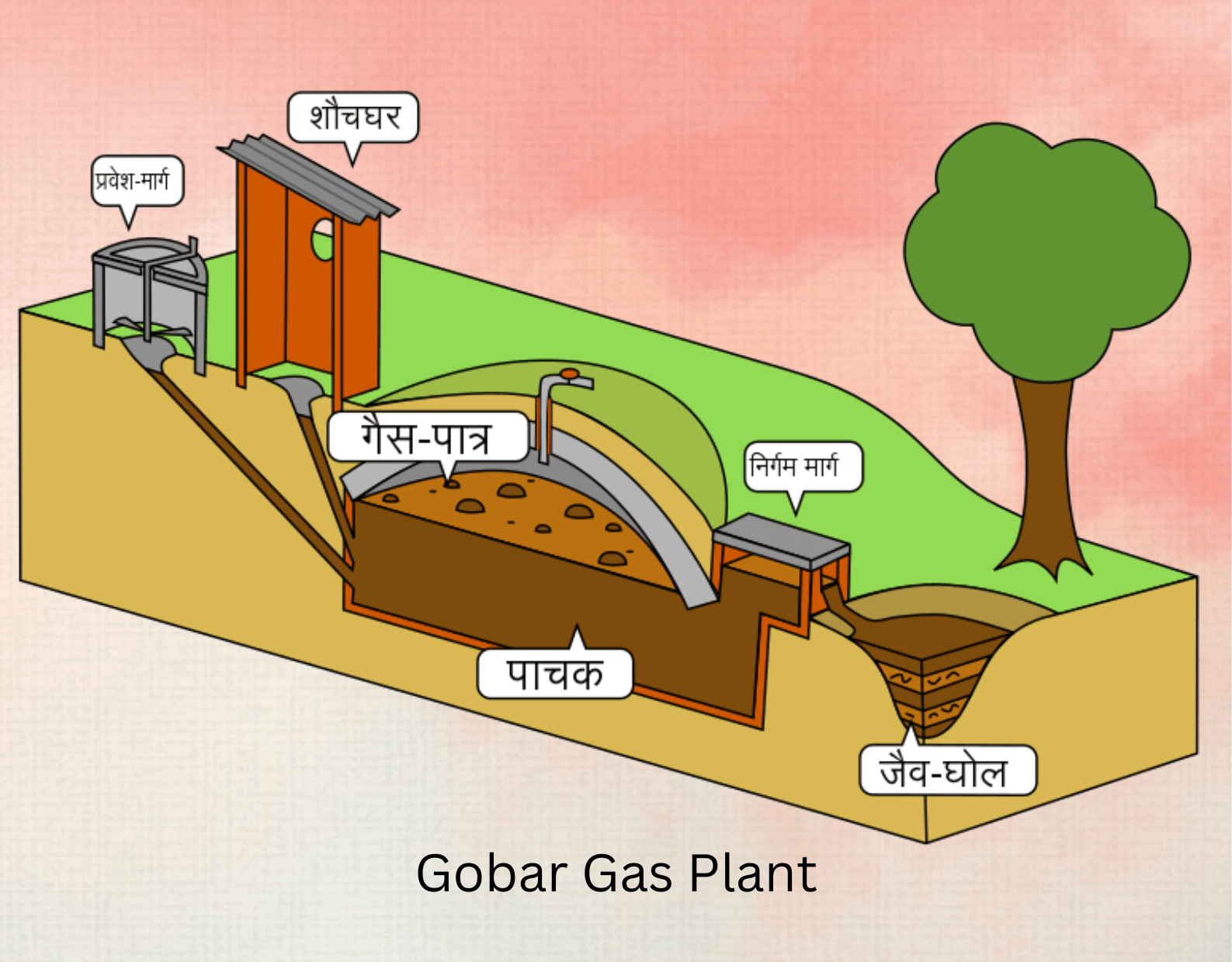
The widespread adoption of Gobar gas plants empowered communities by reducing their reliance on traditional biomass sources like firewood. Cow dung, readily available in rural areas, became a valuable resource for producing biogas, offering a renewable and locally accessible alternative for cooking and lighting. This not only lessened the burden of collecting firewood but also contributed to forest conservation efforts and reduced deforestation pressures.
Technological Advancements:
Late 20th Century:
Biogas undergoes technological refinement. Innovations in digester design, feedstock utilization, and upgrading technologies broaden its applications beyond rural settings.
Germany:
Large-scale digesters emerge, processing agricultural waste and generating electricity, showcasing biogas’s potential in the transition to renewable energy.
Climate & Global Initiatives:
Present & Future:
Amid rising climate concerns, biogas emerges as a green energy frontrunner. Its reduced greenhouse gas emissions compared to fossil fuels position it as a key player in fostering a sustainable future.
International Efforts:
Initiatives like the Global Methane Initiative and the Clean Development Mechanism drive global biogas adoption, contributing significantly to climate change mitigation and clean energy access.
Deconstructing Biogas: Unveiling Its Chemical Composition and Formation
Biogas, an amalgamation of gases, primarily consists of methane (CH4) and carbon dioxide (CO2), accompanied by traces of other gases such as hydrogen sulfide (H2S), nitrogen (N2), and water vapor (H2O). The intricate blend of these gases forms through the fascinating biological process known as anaerobic digestion.
Chemical Composition of Biogas: Understanding its Components
Methane (CH4):
The cornerstone of biogas, methane accounts for the major composition—typically ranging from 50% to 75% of the gas. It serves as the primary component responsible for its combustible nature, making it an excellent source for energy generation.
Carbon Dioxide (CO2):
Carbon dioxide contributes to the gas composition by constituting a significant portion of biogas, usually ranging from 25% to 50%. While not as combustible as methane, it plays a role in energy production and contributes to the greenhouse gas effect.
Traces of Other Gases:
Biogas may also contain traces of gases like hydrogen sulfide, nitrogen, and water vapor. Hydrogen sulfide, in particular, is responsible for the characteristic odor often associated with biogas.
Formation of Biogas: The Intricacies of Anaerobic Digestion
The creation of biogas is a marvel of natural biochemical processes, occurring through anaerobic digestion—an oxygen-deprived biological phenomenon. Here’s a detailed breakdown of this fascinating process:
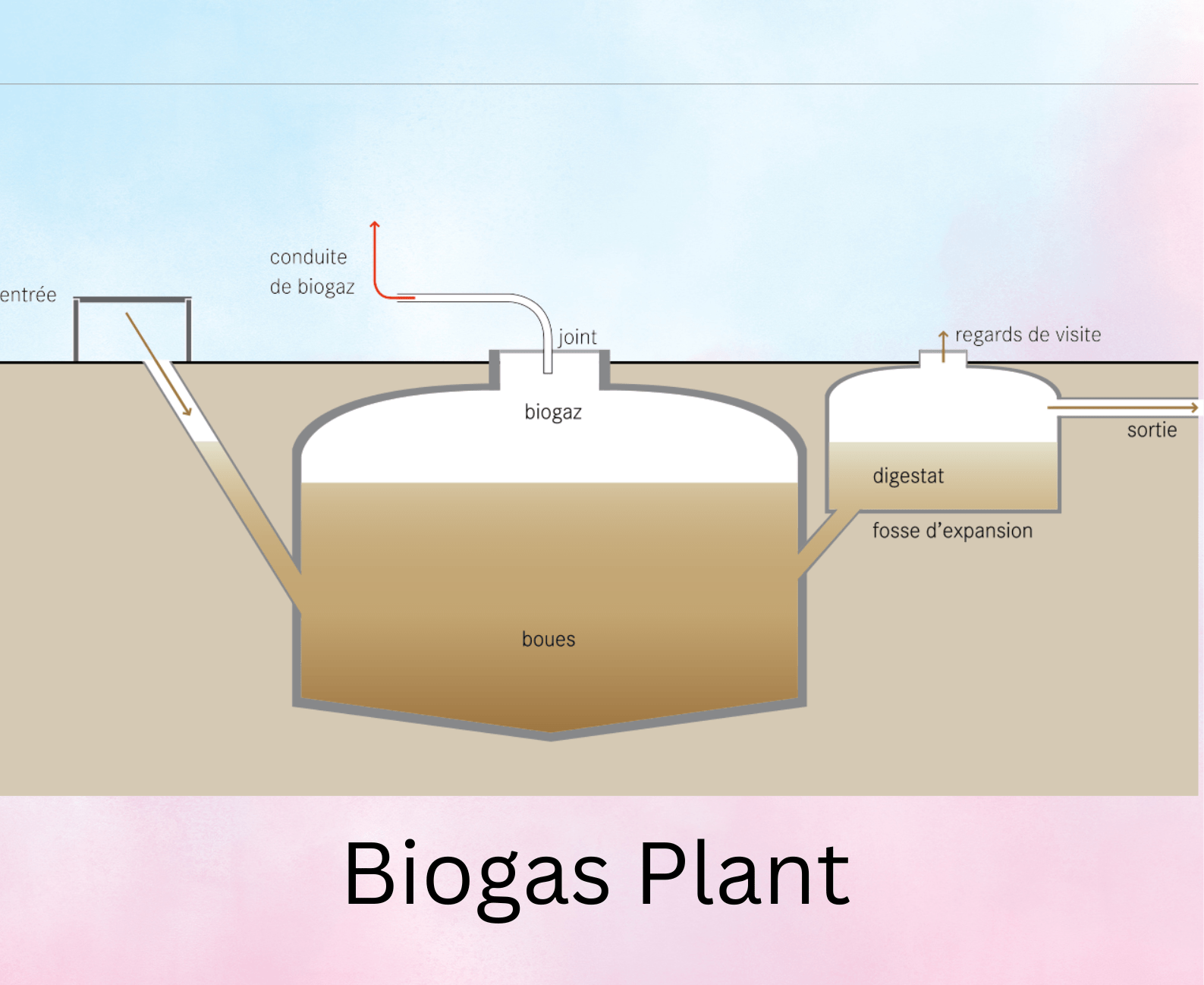
Organic Matter Breakdown:
Organic waste, such as agricultural residues, animal manure, or food scraps, serves as the starting point for biogas production. In the absence of oxygen, microorganisms—bacteria, archaea, and other microbial agents—initiate the breakdown of this organic matter.
Biochemical Transformation:
During anaerobic digestion, these microscopic agents enzymatically break down complex organic compounds present in waste materials. This breakdown generates simpler molecules like acids, hydrogen, and carbon dioxide.
Gas Release and Biogas Formation:
As a result of this biochemical breakdown, gases are released as byproducts. Methane and carbon dioxide emerge as the primary gases, constituting the blend known as biogas.
Factors Influencing Biogas Composition
The composition of biogas is influenced by various factors, including the type of feedstock used, operating conditions within the anaerobic digester, and the microbial community present. Different organic materials yield varying biogas compositions due to their chemical makeup and the microbial processes involved.
Biogas Production: Feedstock, Composition, and Applications
| Feedstock | Biogas Components | Methane Content (%) | Applications | Benefits |
|---|---|---|---|---|
| Food waste | Methane (CH4), Carbon dioxide (CO2), Hydrogen sulfide (H2S) | 50-60 | Electricity generation, Cooking fuel, Vehicle fuel | Renewable energy source, Reduces landfill waste, Creates nutrient-rich digestate |
| Manure | Methane (CH4), Carbon dioxide (CO2), Ammonia (NH3) | 50-60 | Electricity generation, Combined heat and power (CHP), Nutrient source | Renewable energy source, Reduces greenhouse gas emissions, Improves soil health |
| Sewage sludge | Methane (CH4), Carbon dioxide (CO2), Hydrogen sulfide (H2S) | 55-70 | Electricity generation, Wastewater treatment | Renewable energy source, Reduces reliance on landfills, Improves wastewater treatment |
| Agricultural crops | Methane (CH4), Carbon dioxide (CO2) | 50-55 | Electricity generation, Vehicle fuel (biomethane) | Renewable energy source, Reduces reliance on fossil fuels, Provides additional income for farmers |
The Intricacies of Anaerobic Digestion: A Biochemical Symphony
Anaerobic digestion stands as the cornerstone process underpinning the creation of biogas—a meticulously orchestrated biochemical phenomenon involving an array of microscopic organisms. Within this complex ecosystem, a diverse community of bacteria, archaea, and other microorganisms collaboratively engages in a sophisticated biochemical dance.
Biochemical Transformations:
At the heart of anaerobic digestion lies a series of biochemical transformations. These microorganisms proficiently break down complex organic compounds present in organic waste materials, initiating a cascade of enzymatic reactions. This intricate sequence of events leads to the degradation of organic matter, resulting in the production of simpler compounds.
As this biochemical symphony unfolds, the organic waste undergoes a remarkable metamorphosis. The microorganisms meticulously deconstruct complex organic molecules, leading to the formation of simpler compounds such as volatile fatty acids, hydrogen, and carbon dioxide. These intermediary products are pivotal intermediates in the anaerobic breakdown of organic matter.
Biogas Formation in Methane Diagestor:
The culmination of this elaborate biochemical process results in the production of biogas. Within the methane digester, the combination of organic matter breakdown and microbial activity leads to the liberation of gases as byproducts. Methane, a key constituent of biogas, along with carbon dioxide, emerges as the primary gas formed as a consequence of microbial fermentation and degradation processes.
Microbial Synergy and Process Optimization:
In the realm of biogas production, a fascinating phenomenon unfolds the cooperative prowess of microscopic organisms. These microorganisms, encompassing bacteria, archaea, and fungi, join forces in a remarkable symbiotic relationship. Their collaborative efforts center around breaking down organic materials—think food scraps or animal waste—to generate biogas, mainly comprising methane and carbon dioxide. This concerted teamwork among the microorganisms is pivotal for the efficient production of biogas.
Process optimization in the biogas realm entails meticulous orchestration. It involves several critical components: selecting suitable organic material, optimizing its breakdown, maintaining precise environmental conditions such as temperature and pH, managing duration and mixing to facilitate microbial interaction, and continuous monitoring and regulation. These intricately calibrated measures create an ideal habitat for microbial synergy, ultimately enhancing biogas output.
To amplify this microbial synergy, strategies are employed. These encompass diversifying organic material inputs, combining different sources for digestion, comprehending and managing the microbial ecosystem within the digester, and implementing adaptable control mechanisms. The horizon of biogas production holds promise, as ongoing research delves deeper into microbial interactions, microbiome analysis, and process refinement. This ongoing exploration aims to uncover more efficient, stable, and sustainable pathways for biogas production in the future.
Environmental Impact and Applications:
The intricate dance of microorganisms during anaerobic digestion holds significant environmental implications. Beyond biogas production, this process effectively mitigates organic waste by converting it into valuable resources, thereby minimizing environmental pollution. Moreover, the byproduct of anaerobic digestion, known as digestate, serves as a nutrient-rich residue beneficial for agricultural applications, emphasizing the sustainable nature of the process.
The orchestration of anaerobic digestion—a biochemical symphony orchestrated by diverse microbial communities—stands as the pivotal mechanism driving the conversion of organic waste into valuable biogas, showcasing the intricate and sustainable nature of this fundamental process.
Evolution of Biogas Technology: A Journey of Innovation
The evolution of biogas technology spans a historical tapestry woven by ingenious minds, each contributing pivotal milestones to its development. Visionaries like Karl Imhoff and Sir John Arthur Hanbury left indelible marks through pioneering designs and inventions that revolutionized biogas production methodologies. Their contributions significantly augmented the efficiency and intelligence of biogas technology, propelling its advancement across generations.
Multifaceted Utility of Biogas: Beyond Energy Generation
Nature’s Green Energy Solution
Biogas transcends its role as a mere energy source, showcasing remarkable versatility in applications. While recognized for its role in generating sustainable electricity and providing clean heating solutions, biogas emerges as a valuable clean cooking fuel, addressing energy needs in various settings. Moreover, its environmental impact extends beyond energy generation—biogas technology contributes to reducing greenhouse gas emissions while concurrently producing nutrient-rich digestate. This multifaceted utility underscores its significance in diverse sustainability frameworks.
Biogas can be upgraded to biomethane with certain methods. The biogas produced by anaerobic digestion of organic matter contains up to 50% Methane and 50% other gases like Carbon dioxide, Nitrogen, Hydrogen sulfide, and Ammonia (depending upon feedstock). Which lowers its Wobbe index (Heating value of gas composition) in comparison with Natural gas. To achieve biomethane various methods like absorption adsorption, membrane filtration, cryogenic separation, etc. It results in biomethane containing up to 90-95 percent Methane and sufficiently close properties to natural gas including wobbe index.
This upgraded biomethane can be directly injected into the natural gas grid or transported by road. In countries like the UK and Sweden biomethane started being used as fuel for vehicles.
Transformation of Waste: Biogas as a Recycling Champion
At the forefront of innovation, biogas technology emerges as a beacon in recycling organic waste. Conventionally perceived as problematic, organic waste finds renewed purpose through the process of anaerobic digestion. This transformative mechanism not only mitigates waste but also yields digestate—a residue laden with vital nutrients. When applied to agricultural landscapes, this digestate enriches soil health, fostering agricultural sustainability and emphasizing the circular nature of biogas production.
Greenhouse Gas Emission Impact
Biogas can have both positive and negative impacts on greenhouse gas (GHG) emissions, depending on various factors involved in its production and use. Here are some key points:
Positive Impacts:
Reduced Methane Emissions:
Biogas production typically involves the anaerobic digestion of organic materials like agricultural waste, food scraps, or animal manure. When these materials decompose in landfills or open environments, they emit methane, a potent greenhouse gas. Biogas capture and use in controlled environments prevent these methane emissions, mitigating their impact on climate change.
Substitution for Fossil Fuels:
When biogas is used as a renewable energy source for heating, electricity generation, or as vehicle fuel, it can replace fossil fuels like coal, natural gas, or gasoline. This substitution reduces emissions of carbon dioxide (CO2), a major greenhouse gas.
Negative Impacts:
Methane Leakage:
Although biogas production reduces methane emissions from organic waste, there might still be some methane leakage during its production, storage, or transportation. Methane is a potent greenhouse gas, so any leaks could contribute to climate change.
Lifecycle Analysis:
The complete lifecycle of biogas, including its production, transportation, and use, needs to be considered. If fossil fuels are extensively used in the production process or for transporting the feedstock to biogas plants, it could offset the environmental benefits.
Land Use Change:
Large-scale cultivation of feedstocks for biogas production might involve land use changes, potentially leading to deforestation or altering ecosystems, which can impact GHG emissions.
Contemporary Status and Future Trajectory of Biogas
Biogas can be considered as important source of energy when we think of the decarbonization of energy systems. Its journey from ancient observations to modern technology showcases a commitment to renewable energy and environmental consciousness. Today, biogas stands at a pivotal juncture, poised for an even greater impact in the years to come.
Current Global Trends:
- Booming Adoption: Worldwide, biogas technology is experiencing a surge in adoption across various sectors, including energy production, waste management, and agriculture. Europe has led to the application of biogas technology. Governments and organizations are actively promoting biogas initiatives, recognizing their potential to address climate change and energy security challenges.
- Research and Innovation: Ongoing research efforts focus on optimizing biogas production efficiency, exploring novel feedstocks like algae and food waste, and developing advanced technologies for upgrading biogas to cleaner fuels. Upgradation of biogas to biomethane improves its efficiency and makes it possible to be used in a wide range of applications and reduces the consumption of natural gas. These advancements promise to further enhance the environmental and economic viability of biogas solutions.
- Integration with Sustainability Frameworks: Biogas is increasingly viewed as a key player within broader sustainability frameworks. Its ability to convert waste into energy, reduce greenhouse gas emissions, and provide nutrient-rich digestate for agriculture aligns seamlessly with circular economy principles and climate-smart initiatives.
Future Trajectory:
- Expansion in Diverse Applications: Finite energy sources like coal, oil and natural gas will be depleting faster if we continue consuming them at the current rate. Biogas technology and its applications are anticipated to broaden beyond traditional energy generation to reduce dependency on fossil fuels. Integration with domestic, transportation, industrial processes, and even building heating systems presents exciting possibilities for widespread adoption.
- Decentralized Energy Systems: Biogas technology’s modularity and flexibility make it well-suited for decentralized energy systems. With technological innovation in the designs of digestor, making it a cost-effective, advancement in transportation and storage, will enable us to use it for electricity generation, cooking and heating. We can set up smaller-scale biogas units closer to the source of organic waste. This opens doors for rural communities and off-grid regions to generate their own clean energy, fostering energy independence and resilience.
- Policy and Regulatory Landscape: Supportive policies, subsidies and regulations play a vital role in accelerating biogas adoption. Collaboration between government, private entities, NGOs and local communities can initiate widespread the implementation of biogas systems. There are international NGOs like haifer International, Practical Action, SNV Netherlands Development Organisation are working to spread biogas benefits.
Challenges and Opportunities:
While the future of biogas appears bright, certain challenges need to be addressed:
- Economic Competitiveness: In some regions, biogas may still face economic competition from established fossil fuel-based energy systems. Cost reduction through technological advancements and optimized management practices will be crucial.
- Social acceptance: Concerns regarding potential odor emissions and environmental impacts from improper digester operation require transparent communication and community engagement strategies.
- Infrastructure Development: Scaling up biogas adoption necessitates investments in infrastructure, including feedstock collection and transportation systems, biogas upgrading facilities, and grid integration solutions.
Despite these challenges, the opportunities presented by biogas remain immense. Its potential to mitigate climate change, address energy security concerns, and contribute to rural development makes it a vital part of the transition towards a sustainable future. By harnessing the power of innovation, collaboration, and supportive policies, biogas can truly become a beacon of hope in our collective pursuit of a cleaner and greener future.
Conclusion: Biogas—A Nexus of Sustainable Energy
In culmination, biogas encapsulates the synergy between ancient observations and modern scientific prowess. Its journey epitomizes a steadfast commitment to sustainable and green energy solutions, leveraging the inherent potential of natural processes to pave the way for a cleaner, greener future. As a nexus of innovation and environmental consciousness, biogas emerges as a beacon of hope in our collective pursuit of sustainable energy alternatives.
Reference-
Biogas is a significant contribution to decarbonizing gas
Also Check out my other interesting Blogs

